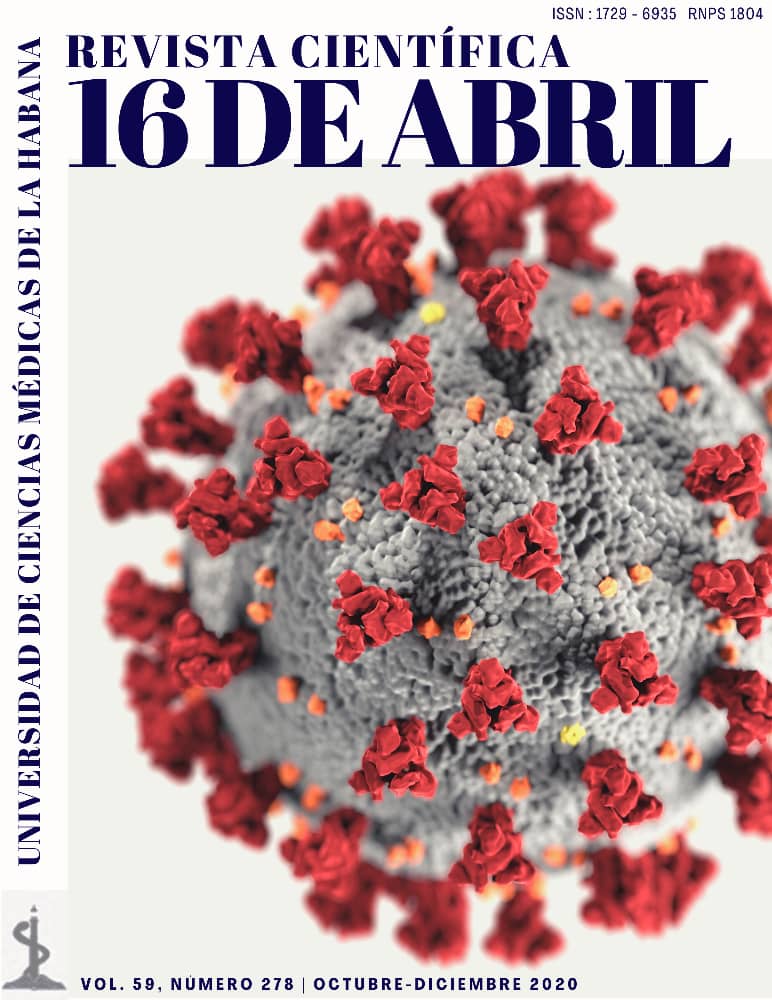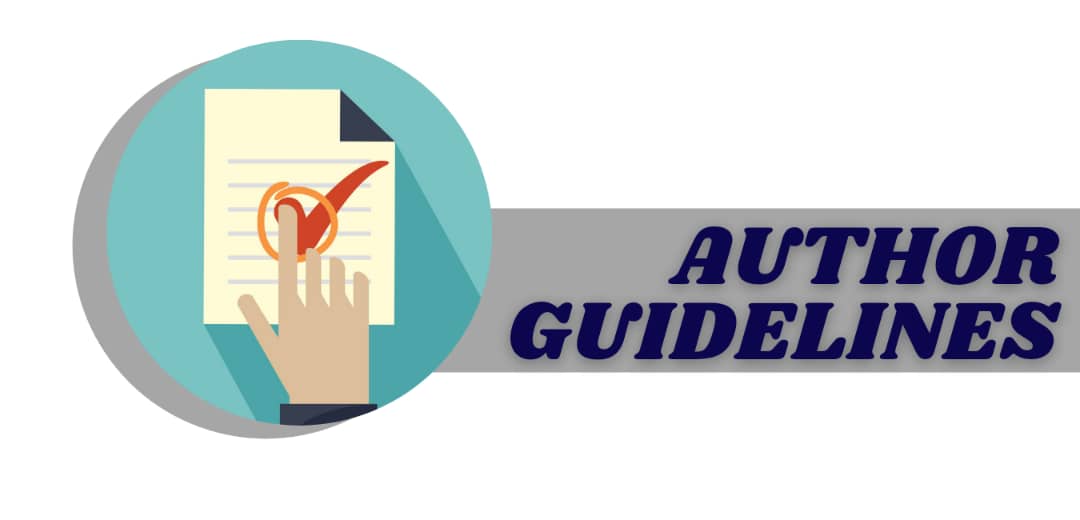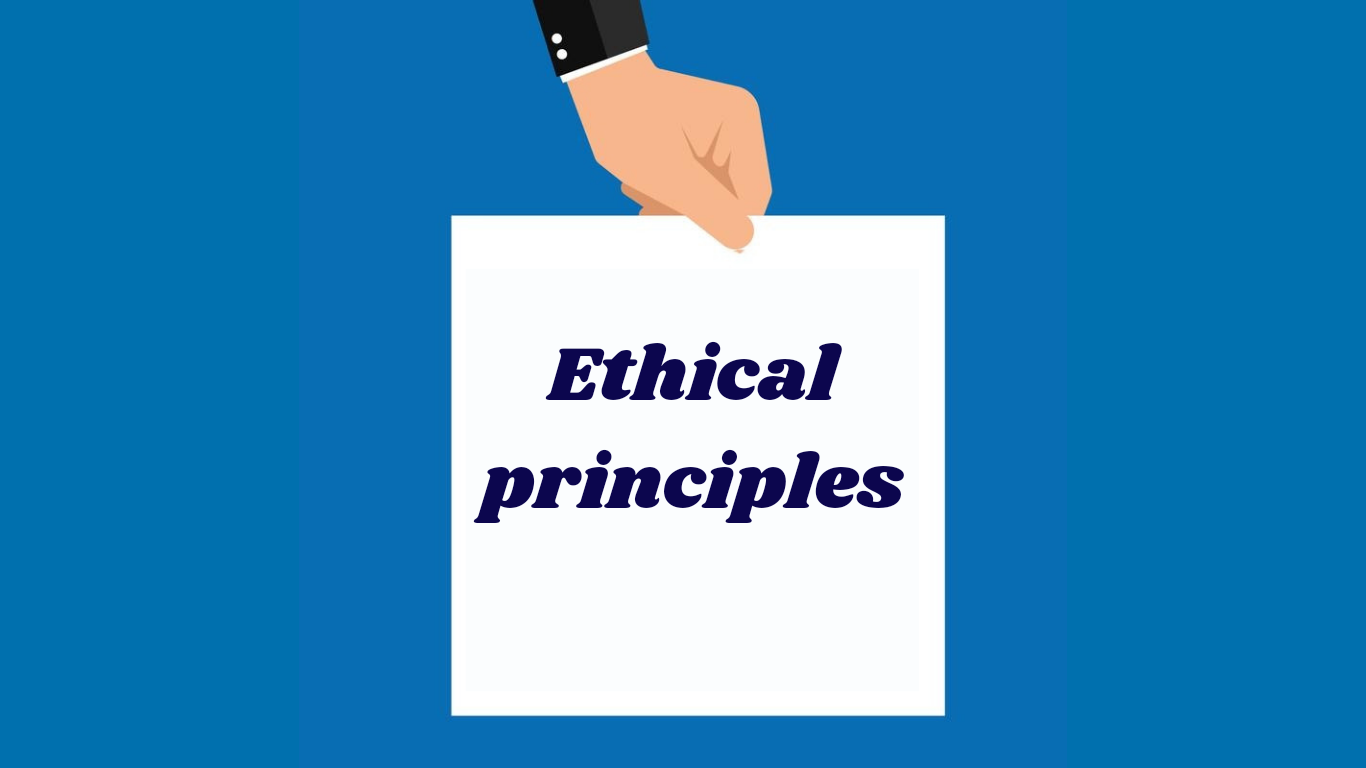Educational intervention about risk factors for lung cancer in adolescents in Gibara
Keywords:
adolescence, prevention, pulmonary neoplasm, risk factors, smokingAbstract
Introduction: the lung neoplasia is defined as a group of diseases resulting from the abnormal growth of cells of the respiratory tract, particularly lung tissue.
Objective: to evaluate the effectiveness of an educational intervention on knowledge of risk factors for lung neoplasia in adolescents belonging to the Basic Work Group 1 of the José Martí Polyclinic of the Gibara Municipality in the period from January to June 2019.
Method: a before-after without a control group study was carried out on the level of knowledge about risk factors for lung cancer in adolescents who belong to Basic Work Group 1 of the "José Martí" Teaching Polyclinic in Gibara in the period from January to June 2019, with a population of 393 and a sample of 135 that met the inclusion and exclusion criteria.
Results: of the sources of information, other sources predominated with 45.2%. After the intervention was applied, 80% and 88.9% answered correctly about the significance of lung cancer and risk factors, respectively. Regarding the generalities of prevention, 91.9% were adequate. The assessment of general knowledge about the risk factors for lung cancer showed the number of patients with adequate knowledge at 94.1%.
Conclusions: the educational strategy was effective because a high level of knowledge was achieved in the majority of adolescents. After the program, adolescents are expected to achieve changes in their lifestyles and to be able to bring this knowledge to their families and friends, which would favor a long-term decrease in the incidence of lung cancer.
References
2. Roca Goderich R, Smith Smith V, Paz Presilla E, Losada Gómez J, Serret Rodríguez B, Llamos Sierra N, (et al). Temas de Medicina Interna, Tomo 1 4ta edición. La Habana: Editorial Ciencias Médicas. 2017.
3. Pérez Guerra LE, Rodríguez Flores O, Morales Morales Y, Amores Ramos A, Jaime Valdés L, Pérez Rodríguez A. Cáncer de pulmón: aspectos clínicos y diagnósticos en pacientes afectados del Policlínico “Marta Abreu”. Estudio de cinco años. Acta Médica del Centro [Internet]. 2017 [citado 2019 Abr 18] Disponible desde: http://www.revactamedicacentro.sld.cu/index.php/amc/article/view/833/0
4. Martínez Feria F, Matos Pineda LE, Acosta Brooks SC, Cobián Caballero CO. Características clínicas y evolutivas de pacientes con cáncer pulmonar de células pequeñas. MEDISAN [Internet]. 2016 Ene [citado 2019 Feb 19]; 20(1): 42-48. Disponible en: http://scielo.sld.cu/scielo.php?script=sci_arttext&pid=S1029-30192016000100007&lng=es.
5. Vicente Peña E, Cívico Quintero H, Méndez Márquez L. Cáncer de Pulmón: En Medicina Interna. Diagnóstico y Tratamiento. La Habana: Editorial Ciencias Médicas; 2016.
6. Acosta Reynoso IM, Remón Rodríguez L, Segura Peña R, Ramírez Ramírez G, Carralero Rivas Á. Factores de riesgo en el cáncer de pulmón. ccm [Internet]. 2016 Mar [citado 2019 Feb 19]; 20(1): 42-55. Disponible en: http://scielo.sld.cu/scielo.php?script=sci_arttext&pid=S1560-43812016000100005&lng=es
7. Leon Roman CA, Morgado Gutierrez FC, Vazquez Borges B. Adicción al tabaco en estudiantes de enfermería técnica. Rev Cubana Enfermer [Internet]. 2017 Dic [citado 2019 Feb 19]; 33(4):e1211. Disponible desde: http://scielo.sld.cu/scielo.php?script=sci_arttext&pid=S0864-03192017000400004&lng=es.
8. World Health Organization. Cancer. [Internet]. 2018 Septiembre [citado 24/4/2020]. Disponible en: https://www.who.int/new-room/fact-sheets/detail/cáncer
9. Pérez Escobar MM, García Rodríguez ME, Armas Moredo K, Álvarez Montané I, Oliva Díaz JA, Pérez Escobar E. Cáncer de pulmón de células no pequeñas: presentación de caso. AMC [Internet]. 2017 Abr [citado 2019 Feb 19]; 21(2): 258-263. Disponible en: http://scielo.sld.cu/scielo.php?script=sci_arttext&pid=S1025-02552017000200010&lng=es.
10. Rodríguez Vázquez JC, Córdova Alvarado SR, Pino Alfonso PP. La función respiratoria en pacientes con cáncer de pulmón. Rev cubana med [Internet]. 2017 Sep [citado 2019 Feb 17]; 56(3): 174-184. Disponible en: http://scielo.sld.cu/scielo.php?script=sci_arttext&pid=S0034-75232017000300004&lng=es.
11. Ministerio de Salud Pública. Anuario Estadístico de Salud 2018 [Internet]. La Habana: Dirección Nacional de Estadísticas; 2019 [citado 5 May 2019]. Disponible en: http://www.sld.cu/anuncio/2019/04/26/publicado-el-anuario-estadistico-de-salud-2018
12. Costa Montané DM, Prado Lage Y, Lozano Salazar JL, Plasencia Asorey C, Riesgo Cosme YC. Principales aspectos clínico-epidemiológicos del cáncer de pulmón. MEDISAN [Internet]. 2011 Ago [citado 2019 Feb 19]; 15(8): 1098-1106. Disponible en: http://scielo.sld.cu/scielo.php?script=sci_arttext&pid=S1029-30192011000800008&lng=es
13. Pérez Martínez D, Saborit Corría E, Jiménez Sánchez L. Intervención educativa para incrementar la severidad percibida del tabaquismo en pacientes fumadores. Rev. Ciencias Médicas [Internet]. Enero-febrero 2019 [citado 2019 Feb 19]; 23(1): 41-56. Disponible desde: http://www.revcmpinar.sld.cu/index.php/publicaciones/article/view/3615
14. Izquierdo Díaz R, Ochoa Ortega MR, Casanova Moreno MC, Díaz Domínguez MA. El tabaquismo y su prevención educativa en la población de un consultorio médico. Rev. Ciencias Médicas [Internet]. Julio-agosto 2015 [citado 2019 Feb 19]; 19 (4):642-651. Disponible en: http://scielo.sld.cu/scielo.php?script=sci_arttext&pid=S1561-31942015000400008&lng=es.
15. Cruz Peña A, Molerio Pérez O, Llopiz Guerra K, Aguinaga-Villegas D, Gálvez-Suarez E, Quiroz-Sánchez T, et al. Percepción de riesgo e incidencia antitabáquica en el rendimiento académico de estudiantes universitarios de Ciencias Médicas. Propósitos y Representaciones [Internet]. Ene-Abr 2020 [citado 2020 Feb 19]; 8(1):e433. Disponible desde: http://dx.doi.org/10.20511/pyr2020.v8n1.433
16. Ruiz Mori E, Ruiz Mori H, Salazar-Rojas R, Torres-Mallma C, Valer-Villanueva S, Santiago Brendy A, et al. Conocimiento de los riesgos del tabaquismo en fumadores, exfumadores y no fumadores. Horiz. Med. [Internet]. 2016 Ene [citado 2019 Abr 28]; 16(1): 32-37. Disponible en: http://www.scielo.org.pe/scielo.php?script=sci_arttext&pid=S1727-558X2016000100005&lng=es
17. Pérez Barl L, Guirola Fuentes J, García González Y, Díaz Machado A, Mastrapa Ochoa H, Torres Ruiz JR, et al. Nivel de conocimientos sobre los daños del consumo de drogas en adolescentes. Revista Cubana de Medicina Militar [Internet]. 2019[citado 2020 Feb 10]; 48(4):780-796. Disponible desde: http://www.revmedmilitar.sld.cu/index.php/mil/article/view/232/399
18. Muro García A, González Muro A, Toledo Prado JL, Díaz Martínez N, Roche Batista N. Intervención comunitaria en un grupo de adolescentes en riesgo de adicciones. Gac méd espirit [Internet]. 2007 [citado 2019 Mayo 19]; 9(2): [aprox.-10 p.]. Disponible desde: http://revgmedspirituana.sld.cu/index.php/gme/article/view/782
19. Soria-Esojo MC, Velazco Garrido JL, Hidalgo Sanjuán MV, de Luis Martínez G, Fernández Aguirre C, Rosales Jaldo M, et al. Intervención sobre tabaquismo en estudiantes de enseñanza secundaria de la provincia de Málaga. Arch Bronconeumol [Internet]. 2005 [citado 2019 Feb 20]; 41(12):654-8. Disponible en: https://doi.org/10.1016/S0300-2896(5)70720-1
20. Pérez Figueroa A. Educational intervention to increase the perceived severity of tobaco addiction in smokers. Rev Ciencias Médicas [Internet]. 2019 Abr [citado 2020 Ene 06]; 23(2): 172-173, Disponible desde: http://scielo.sld.cu/scielo.php?script=sci_arttex&pid=S1561-31942019000200172&Ing=es.
21. Pérez Martínez D. Intervención educativa para incrementar la severidad percibida del tabaquismo en pacientes fumadores. Rev Ciencias Médicas [Internet]. 2019 Feb [citado 2020 Ene 06]; 23(1): 41-56. Disponible desde: http://scielo.sld.cu/scielo.php?script=sci_arttex&pid=S1561-31942019000100041&Ing=es.
22. Gulayin PE, Irazola V, Rubinstein A, et al. Adolescentes Libres de Tabaco. Efectividad de una intervención educativa. Estudio antes-después controlado. Arch Argent Pediatr [Internet]. 2018 [citado 2020 Feb 11];116(3):e392-e400. Disponible desde: http://dx.doi.org/10.5546/aap.2018.e392
Downloads
Published
How to Cite
Issue
Section
License
Those authors who have publications with this journal, accept the following terms:
The authors will retain their copyright and guarantee the journal the right of first publication of your work, which will be under a Creative license Commons Attribution-NonCommercial-ShareAlike 4.0 International . (CC BY-NC-SA 4.0).
The authors may adopt other non-exclusive license agreements for the distribution of the published version of the work (eg:deposit it in an institutional telemat








